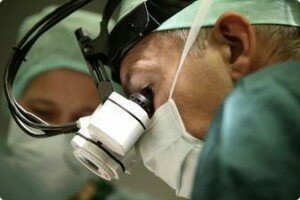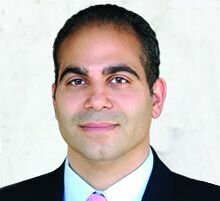
Each year in the United States, about 200,000 people are diagnosed with anal fissures, making fissures one of the most common anorectal issues. Anal fissures affect people from all ages, backgrounds and social classes.
A tear in the anal canal lining, known medically as a fissure, is typically discovered because it causes a lot of pain when the sufferer is having a bowel movement. Fissures may also lead to blood in the stool and other symptoms. People often believe they have hemorrhoids until they are diagnosed with an anal fissure by their colon and rectal surgeon, also known by the older term, proctologist.
Do I Need to See a Doctor?
While many anal fissures do not require the expertise of a doctor, the symptoms may be easily confused with those of more serious issues. Some people are aware of when an anal tear occurs. This may have been when a stomach virus caused diarrhea, when you passed a large or hard stool, or even during childbirth. Others are unaware that the anal tissue has been injured, and are not sure about the cause of their symptoms. In this case, it is important to rule out more serious conditions as soon as possible.
The great majority of tears in the anal cavity heal on their own, especially once the patient increases their fiber intake and stops straining to use the bathroom. Because minor, acute cases are so quick to heal, these fissures may be even more common than current medical statistics suggest.
Unfortunately, though, about 40% of anal fissures become chronic. This means it has not healed after at least two months. Sometimes, fissures may persist for years without proper treatment.
While it is always a good idea to have rectal discomfort checked out by a well-trained colon and rectal specialist, many people only visit a doctor for this type of issue when the symptoms become unbearable. An unhealed anal fissure may cause stinging and sharp pain during bowel movements, in addition to burning in the area. This can even last for two to three hours after each bowel movement.
What Treatments Are Used For Anal Fissures?
Home treatment will relieve the pain of most anal fissures within a day or two, and the tear will be completely healed in four to six weeks. Home treatment is fairly simple, and focuses around helping the bowels to move without straining. For those who struggle with constipation, their doctor may also recommend a fiber supplement, stool softener or laxative.
Home treatment for an anal fissure usually consists of:
- Eating high fiber foods
- Staying hydrated by drinking a lot of water
- Exercising, even if it is just going for a short walk.
- Taking regular sitz baths in warm water to relax your internal anal sphincter
- Gently cleaning the area after a bowel movement, using medicated pads instead of toilet paper
If the symptoms do not improve, or disappear and return within two to three months, home treatment may not be enough to heal the tear. Your doctor will most likely prescribe some form of hydrocortisone ointment or nitroglycerin ointment. These are usually applied topically, and come in ointment, cream or gel form. Occasionally, Botox may be prescribed to temporarily relax the anal sphincter, thus allowing the fissure to heal. This is administered by a colon and rectal surgeon as a brief office procedure.
If pain and discomfort persist while using the prescription medication, a more invasive treatment may be necessary. In most cases, an operation known as a lateral internal sphincterotomy is used to speed healing of a chronic anal fissure that has not responded to other treatment methods. This surgery creates a small cut in the internal sphincter, allowing it to relax so that the tear can heal properly.
Should I Be Concerned About Needing A Lateral Internal Sphincterotomy?
While being told you need surgery can be stressful, a lateral internal sphincterotomy is a rather simple procedure that offers quick results for most people. General anesthesia is often used. However, the operation can also be done with only a local anesthesia. It is almost always done as an outpatient procedure, meaning you will return home the same day.
Of course, there will be some pain from the operation itself, and this will be most noticeable when you have a bowel movement. For most people, though, the pain from the surgery is greatly reduced when compared to their previous pain from the tear in the anal lining. In fact, most realize within a day or two that the pain from their anal fissure has disappeared.
Most doctors recommend that patients eat a high-fiber diet and drink plenty of fluids during recovery. Some may prescribe laxatives or stool softeners. A warm sitz bath may also help reduce any pain associated with a bowel movement. There may also be small amounts of blood on the toilet paper or in the toilet for several weeks following trips to the bathroom.
Most who have a lateral internal sphincterotomy return to work quickly and can resume most normal activities before two weeks. Your doctor may recommend avoiding some types of movements, including twisting and turning and lifting heavy objects until you have recovered completely. The tear itself, as well as the surgical site usually heal quickly and completely.









